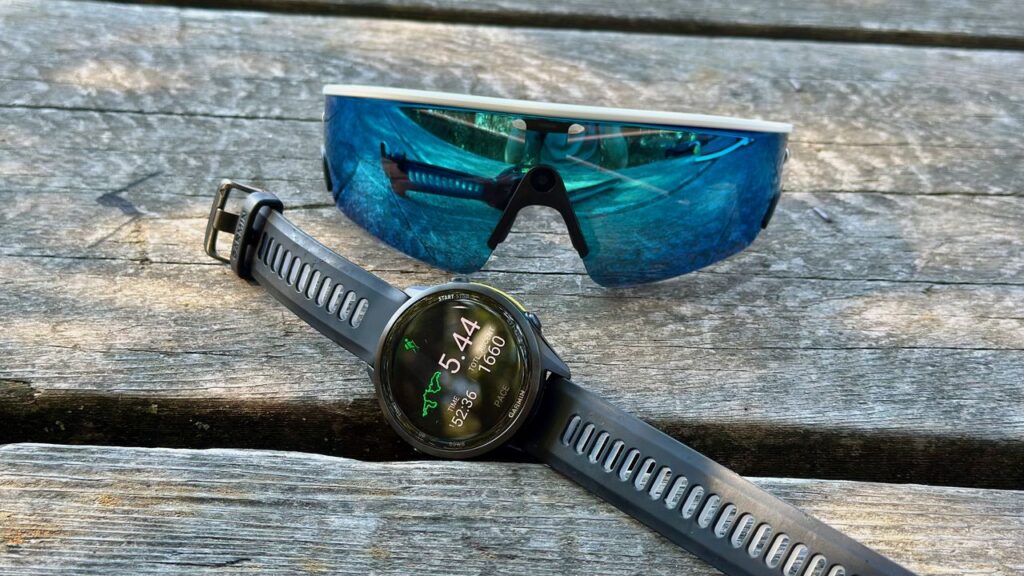The future is here, and it’s perched on your nose. Oakley and Ray-Ban Meta smart glasses have promised to revolutionize our lives, blending seamlessly into our daily routines. But are they more than just a techy fashion statement? As a Garmin devotee, I was particularly intrigued by the Garmin integration, a feature that offers real-time workout data right in your line of sight. I put the Oakley Meta Vanguard glasses to the test, and while I found some genuine utility, it’s definitely not a perfect experience. Here’s the good, the bad, and the downright ugly of Garmin integration on these smart glasses.
The Good: Real-Time Stats and Autocapture
Let’s start with the positives. The most compelling aspect of the Garmin integration is the ability to see real-time performance data directly through the glasses. Imagine running a 5k and glancing up to see your pace, heart rate, and distance without ever taking your eyes off the road. This is the promise, and in many ways, it delivers.
The glasses connect seamlessly to your Garmin watch, pulling data from your selected activity profile. The information is displayed discreetly in the corner of your view, avoiding any major distraction. It’s a significant advantage for athletes who want to stay focused on their performance without constantly checking their wrist.
Autocapture is another standout feature. When the glasses detect a significant moment in your workout – perhaps a personal best or hitting a target heart rate – they automatically record a short video clip. This is a fantastic way to capture memorable moments without fumbling for your phone. Think about capturing that exhilarating final sprint or the stunning view from the summit of your hike, completely hands-free.
The Bad: Limited Data and Glitchy Connectivity
While the real-time data is a welcome addition, the information displayed is somewhat limited. You’re essentially getting a stripped-down version of what your Garmin watch provides. More advanced metrics, like training effect or recovery time, are absent. If you’re a data-driven athlete who thrives on in-depth analytics, you might find the information a bit basic.
Connectivity issues were also a recurring problem during my testing. The glasses occasionally disconnected from my Garmin watch, requiring me to re-establish the connection manually. This is frustrating, especially in the middle of a workout. A dropped connection can disrupt your flow and negate the benefit of having real-time data in the first place. The reliability needs improvement to be truly useful for serious training.
The workout status LED, designed to provide a quick visual cue of your performance zone, also proved less helpful than I’d hoped. It’s a small light on the frame that changes color based on your heart rate zone. The idea is good, but the LED is subtle and easy to miss, especially in bright sunlight. A more prominent and customizable indicator would significantly enhance its functionality.
The Ugly: Battery Drain and Social Awkwardness
Let’s be honest, smart glasses still carry a certain social awkwardness. While the Oakley Meta Vanguard glasses are stylish, they are noticeably bulkier than traditional sunglasses. Wearing them constantly can draw attention, and explaining their capabilities to curious onlookers gets old fast. While this isn’t directly related to Garmin integration, it’s a factor to consider if you value a low profile.
The biggest downside, however, is the significant battery drain. Using the Garmin integration noticeably reduces the glasses’ battery life. While the standard battery life is already less than stellar, the constant data transfer and Autocapture features accelerate the depletion. Expect to charge the glasses more frequently if you’re actively using the Garmin features during your workouts. This limits their practicality for longer activities like marathons or multi-day hikes.
Finally, the privacy implications of constantly recording video, even with Autocapture, deserve consideration. While the glasses have indicators to show when they’re recording, it’s essential to be mindful of your surroundings and respect the privacy of others. Using the recording features responsibly is paramount.
Who Should Buy These? And Who Should Skip?
The Garmin integration on the Oakley Meta Vanguard glasses is a niche feature that will appeal to a specific type of Garmin user. If you’re a casual athlete who appreciates streamlined data and hands-free recording, these glasses might be a worthwhile investment. The ability to see real-time stats without looking at your wrist is undeniably convenient, and Autocapture can capture some memorable moments.
However, if you’re a serious athlete who relies on comprehensive data analysis or needs long battery life, you’ll likely find the limitations frustrating. The limited metrics, connectivity issues, and battery drain detract from the overall experience. In that case, sticking with your trusty Garmin watch might be a better option.
Ultimately, the decision comes down to your individual needs and priorities. The Oakley Meta Vanguard glasses with Garmin integration offer a glimpse into the future of wearable technology, but they’re not quite ready to replace dedicated fitness trackers. It’s a promising feature with plenty of potential, but it still needs some refinement before it can truly shine.
